Most of our projects produce open source publications, usually downloadable from the Publications Office of the EU. The majority of our deliverables include case studies, success stories, user-friendly data analyses, primary collection of information through surveys or interviews, and recommendations for policy makers.


Our publications from 2015 onwards are listed below. From the newest to the oldest.
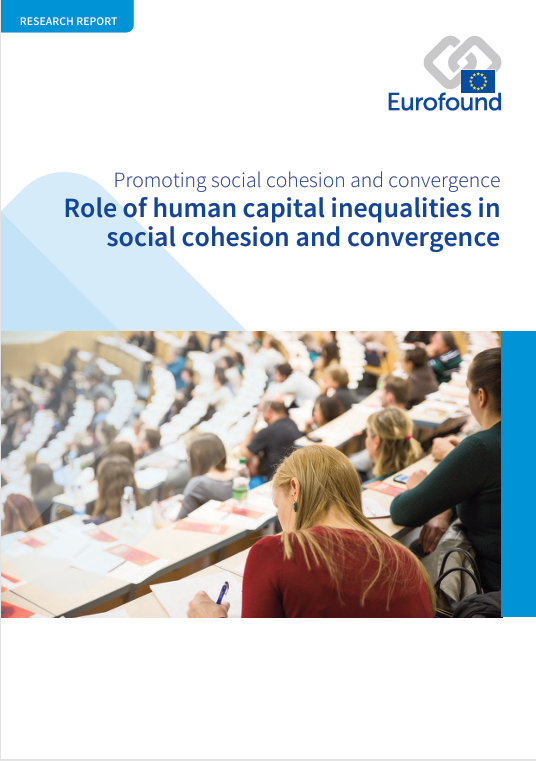
Peruffo, E., Consolini, M., Woharcik, V., Mascherini, M., Cavallini, S. and Soldi, R. (2024), Role of human capital inequalities in social cohesion and convergence. This Eurofound research report assesses the differences among Member States in human capital’s creation, utilization and mobility. Human capital is defined as ‘the knowledge, skills and other attributes that enable people to be productive’ and is at the basis of a country’s economic and social progress. With regard to mobility, the cost to Member States of emigration of talent is calculated. In addition, lessons for policy development to attract and retain highly skilled graduates are derived from case studies in five Member States.
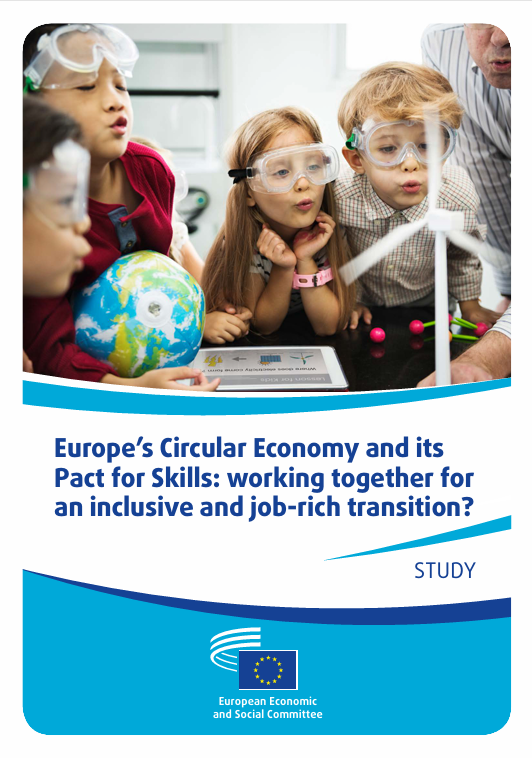
Cavallini, S. and Soldi, R. (2023), Europe’s Circular Economy and its Pact for Skills: working together for an inclusive and job-rich transition?. Research for the European Economic and Social Committee, ‘Single Market, Production and Consumption’ section. The transition to circularity is changing business models and skill needs of industry in Europe. Notwithstanding a weak capability to monitor the development of skills and occupations related to circularity, the EC supports industry, education institutions and public authorities in the undertaking of skilling, upskilling and reskilling initiatives of the European workforce. Besides the Erasmus+ programme, the blueprint projects, and the Pact for Skills, other EU instruments are available to facilitate skills development for circularity. This study highlights some limitations of these instruments and makes suggestions for improvement.

Soldi, R. and Cavallini, S. (2023), Collecting data on the situation of social protection of seasonal workers in the agriculture and food sectors in EU Member States after COVID-19. Research for the European Economic and Social Committee, NAT section. In agriculture, EU and non-EU seasonal workers are needed at peaks of planting and harvesting activities. The single market allows to provide labour where and when it is needed, but once EU seasonal workers arrive at their work destination, they are subject to fragmented, often localised, employment arrangements and rules. Non-EU seasonal workers follow different mobilisation mechanisms, but end up in the same fragmented situations. In addition, an insufficient law enforcement capacity at the territorial level makes seasonal workers’ rights prone to violation. This study collects evidence, draws insights from Italy, Spain and the Netherlands, highlights problems, and makes suggestions to improve the working and living conditions of these workers in Europe.
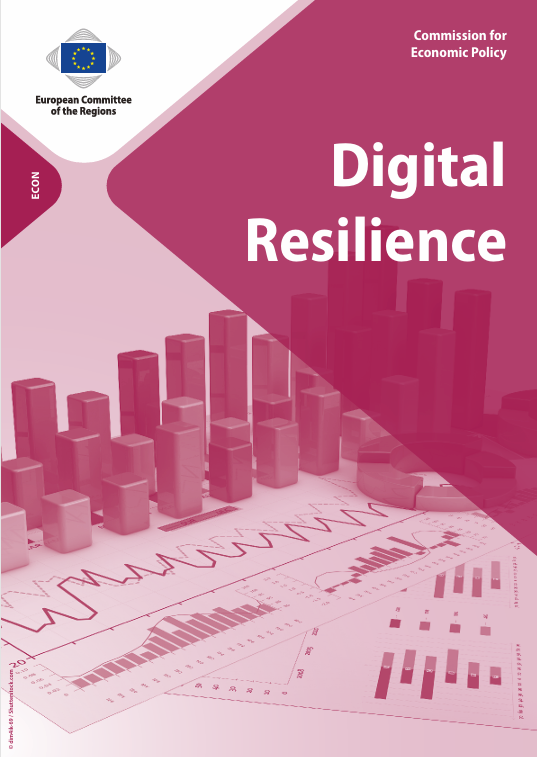
Cavallini, S., Soldi, R., Casalini, G., Verdi, G. and Grasso, A. (2023), Digital resilience. Research for the European Committee of the Regions, Commission for Economic Policy. The ‘spring’ of digital resilience for public authorities began when it became evident that there was a need to associate digitalisation with information security. This research is a pioneer in reviewing the state of play of digital resilience of local and regional authorities across the EU. Besides providing a definition of public sector’s digital resilience, it describes eight case studies and the theory of the cost of digital non-resilience. Finally, it provides suggestions to public authorities at all levels, from EU institutions to local and regional administrations, for achieving a reasonable level of digital resilience within territorial public entities. The study was included in the list of the key publications of the European Union, autumn 2023.

Gonzalez Rojas I., Volpe M., Veledar O., Cavallini S., (2022), Cascade funding as an alternative funding source for innovative investments. The lack of funding opportunities still constrains innovation within start-ups and (SMEs. This paper aims to comparatively assess cascade funding initiatives against more traditional funding approaches as relevant alternatives for financing innovation. Cascade funding provides small grants issued by the beneficiaries of projects funded under Horizon 2020. It also allows start-ups and (SMEs to benefit from the technical and/or business expertise of leading European enterprises, universities and technology centres within the consortium. The DigiFed project is analysed as a case study for cascade funding. This paper was published in the proceedings of the 17th European Conference on Innovation and Entrepreneurship, ECIE 2022.
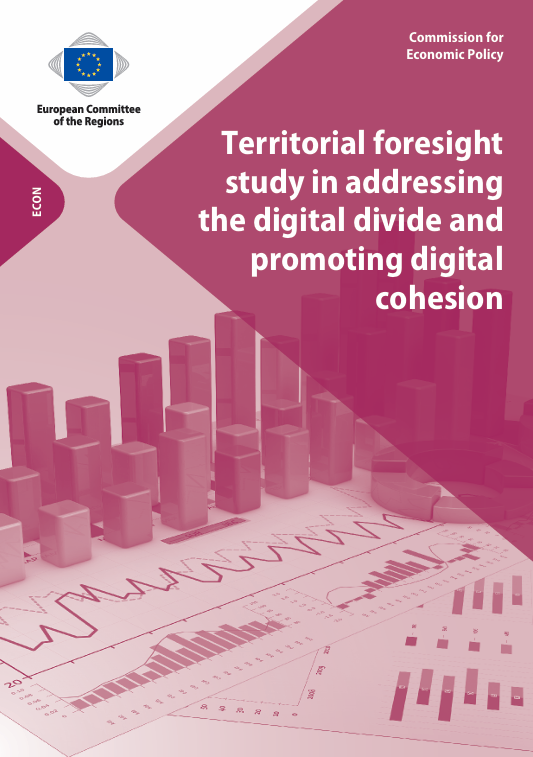
Fontana, S., Bisogni, F., Cavallini, S. and Soldi, R. (2022), Territorial foresight study in addressing the digital divide and promoting digital cohesion. Research for the European Committee of the Regions, Commission for Economic Policy. Since 2019, the European Committee of the Regions has been advocating for including digital cohesion as part of the traditional concept of cohesion, which currently encompasses the economic, social and territorial dimensions. This study investigates the potential evolution of digital cohesion in the future with a combination of approaches such as horizon scanning, megatrends analysis, scenarios building, visioning and backcasting.
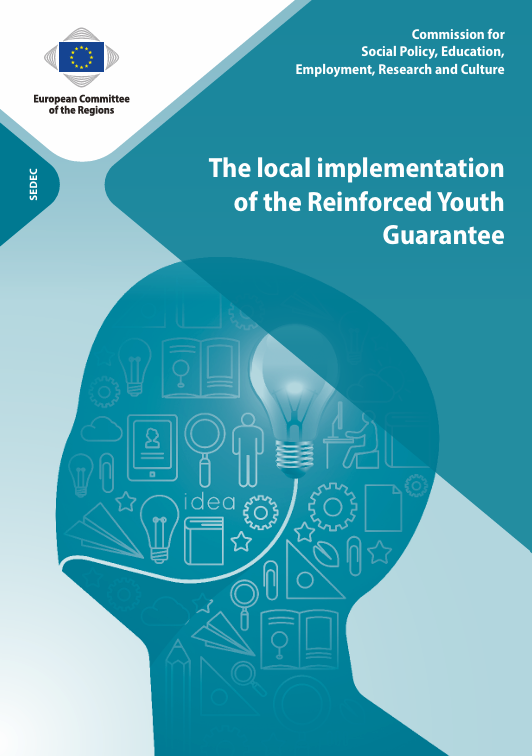
Errico, B., Bisogni, F., Soldi, R. and Cavallini, S. (2022), The local implementation of the reinforced youth guarantee. Research for the European Committee of the Regions, SEDEC Commission for Social Policy, Education, Employment, Research and Culture. The study investigates the different approaches taken by local and regional providers of Youth Guarantee schemes (i.e., Public Employment Services) in order to assess their level of coherence with the 2020 Council Recommendation on Reinforcing the Youth Guarantee.
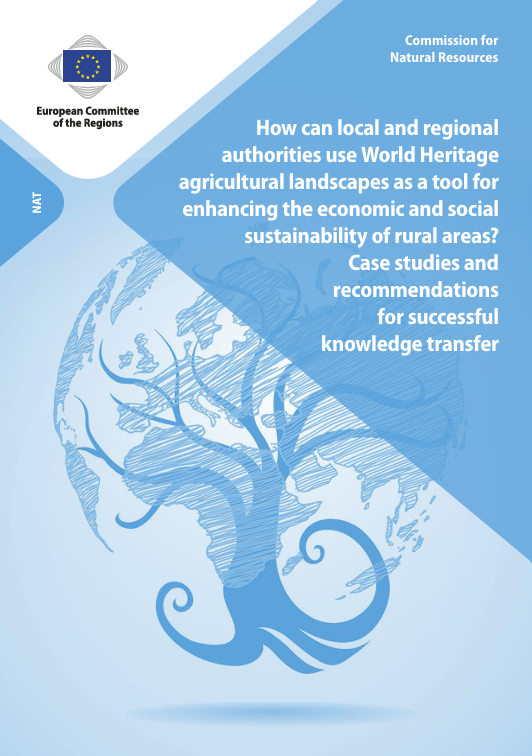
Bisogni, F., Soldi, R., Cavallini, S. and Di Matteo, L. (2022), How can local and regional authorities use World Heritage agricultural landscapes as a tool for enhancing the economic and social sustainability of rural areas? – Case studies and recommendations for successful knowledge transfer, European Committee of the Regions, NAT commission. This study aims to analyse the value added by inscribing European agricultural landscapes on the World Heritage (WH) list in terms of enhanced economic and social sustainability of rural areas. The study also aims to provide guidance to European local and regional authorities (LRAs) for initiating and financing integrated projects, including cross-border ones, towards the inscription on the WH list.
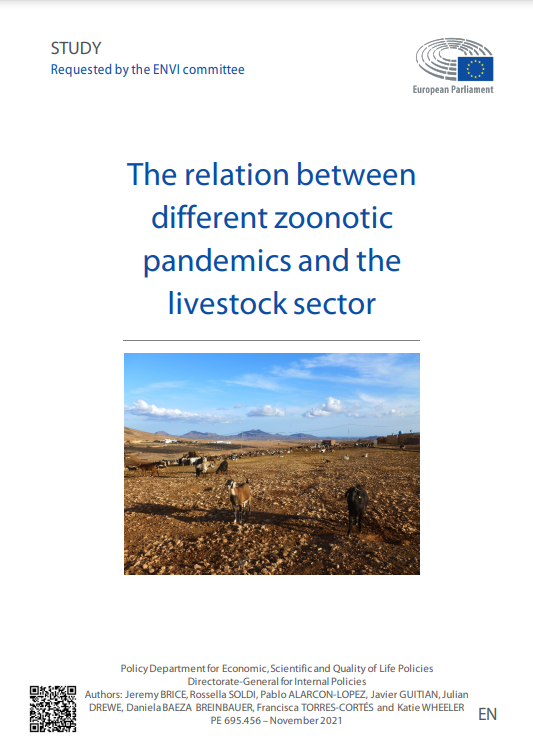
Brice, J., Soldi, R. Alarcon-Lopez, P., Guitian, J., Drewe, J., Baeza BreinBauer, D., Torres-Cortés, F. and Wheeler, K. (2021), The relation between different zoonotic pandemics and the livestock sector. Research for the European Parliament’s committee on Environment, Public Health and Food Safety. This study examines the zoonotic disease risks posed by the livestock sector (including fur production), reviews the risks posed by different livestock species and production systems, and examines case studies of past zoonotic disease epidemics. Building on this evidence, it reviews EU zoonosis surveillance and control arrangements. It recommends improvements including integration of human and animal disease surveillance services, expanded use of syndromic surveillance and changes to the funding of Member States’ zoonotic disease programmes under Regulation (EU) 652/2014.
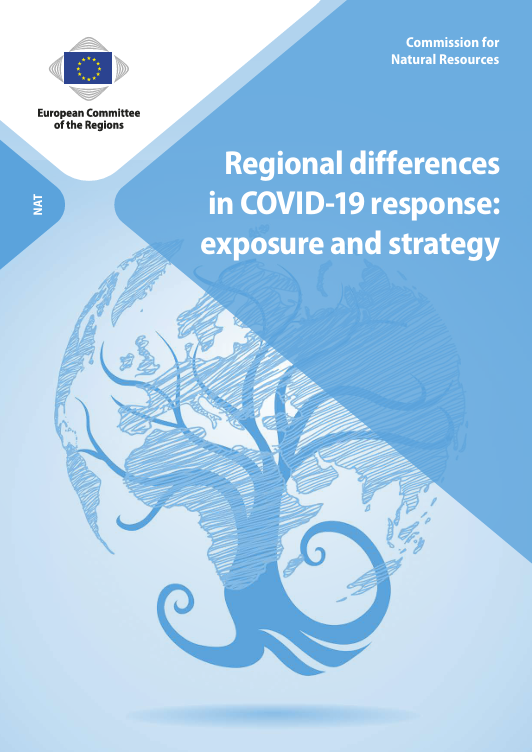
Soldi, R. (2021), Regional differences in COVID-19 response: exposure and strategy. Research for the European Committee of the Regions, NAT commission. This study highlights differences among regions in terms of exposure to the COVID-19 pandemic, resilience, and progress in the roll out of vaccinations. It concludes outlining recommendations for enhancing the resilience of regional health systems in line with the creation of a European Health Union.
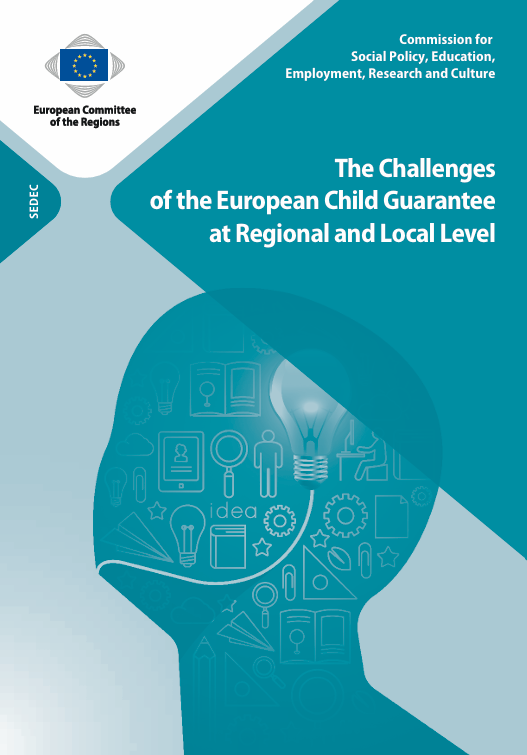
Cavallini, S., Soldi, R. and Errico, B. (2021), The challenges of the European Child Guarantee at regional and local level. Research for the European Committee of the Regions, SEDEC Commission for Social Policy, Education, Employment, Research and Culture. This research provides the evidence that local and regional authorities are key in providing education, health, housing and social services (including healthy food) to homeless children; children with a migrant background, or minority ethnic origin; children experiencing severe deprivation, social exclusion, disabilities or mental health issues; children in alternative care; and children in precarious family situations which may endanger their safety. Besides the delivery of services, they are also involved in their planning and financing, thus becoming important for the implementation of the recently approved (June 2021) European Child Guarantee.
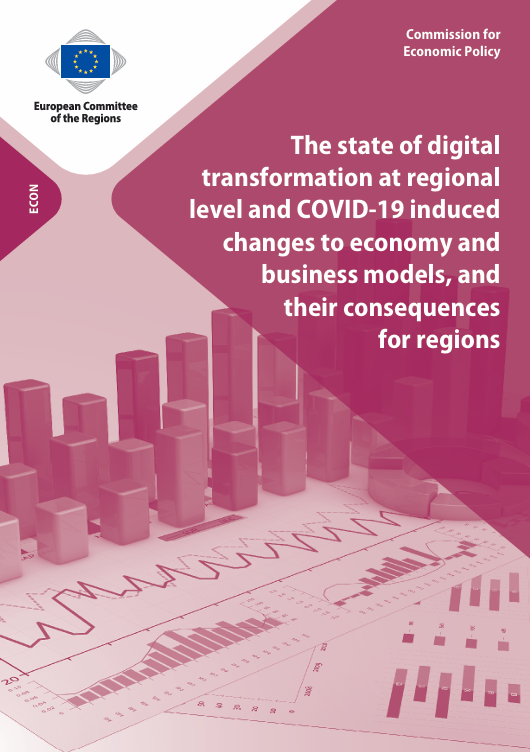
Cavallini, S. and Soldi, R. (2021), The state of digital transformation at the regional level and COVID-19 induced changes to economy and business models, and their consequences for regions. Research for the European Committee of the Regions, SEDEC Commission for Social Policy, Education, Employment, Research and Culture. This research focuses on understanding the state of digitalisation of small and medium-sized enterprises (SMEs) in European regions, and of the level of territories’ readiness in supporting their digital transformation. The overall scope of the study is to highlight which policy actions regional authorities should prioritise in order to successfully support and accelerate the digital transformation of business.
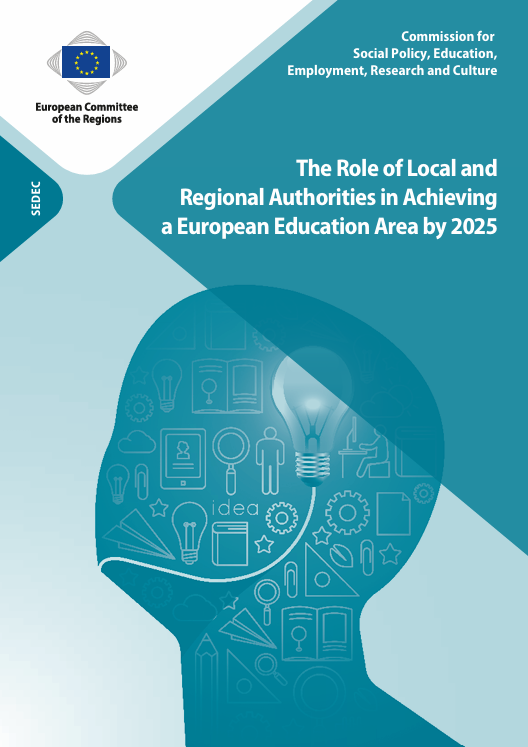
Cavallini, S., Soldi, R. and Bisogni, F. (2021), The role of local and regional authorities in achieving a European Education Area by 2025. Research for the European Committee of the Regions, SEDEC Commission for Social Policy, Education, Employment, Research and Culture. This study identifies, analyses and categorises educational and training initiatives implemented by local and regional authorities across the EU. Local and regional authorities’ responsibility in education and training varies importantly among Member States, but the evidence gathered through this study tells a story of active contribution of the subnational level to the achievement of a European Education Area (EEA).

Soldi, R. (2021), The impact of CAP on territorial development of rural areas. Research for the European Committee of the Regions, NAT Commission. In the first half of 2020, the European Committee of the Regions designed and launched a consultation on ‘Evaluation of the CAP impact on territorial development of rural areas’. This report summarises the results of the consultation which took the form of an online questionnaire and, overall, involved more than 200 stakeholders to different degrees. Conclusions and policy pointers for the future are drawn in the last part of the study.
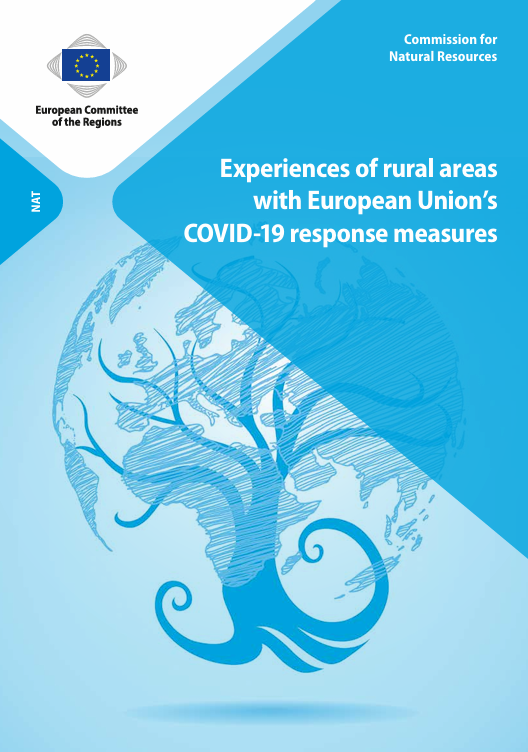
Matthews, A. and Soldi, R. (2021), Experiences of rural areas with European Union’s COVID-19 response measures. Research for the European Committee of the Regions, NAT Commission. This report provides a ‘policy fitness check’ on the specific measures introduced by the European Union to alleviate the socio-economic consequences of the COVID-19 pandemic in rural areas. It analyses the use of these measures by regional authorities and identifies some of the challenges linked to their implementation on the ground.

Soldi, R. (2021), Regional health policy responses to the COVID crisis. Research for the European Committee of the Regions, NAT Commission. The COVID-19 pandemic thoroughly tested the EU response capacity as well as the ability of public authorities at all levels to cope with the emergency. The pandemic was also asymmetric across the EU in terms of incidence and impact. It affected countries and regions at different times and with varying intensity. This study was prepared during the lock down period and highlights key preliminary findings on the asymmetric incidence of the pandemic across European regions and the quantification of the impact of COVID-19 at the regional level. It also provides examples of regional responses, reviews relevant EU measures meant to provide immediate support to regions and proposes policy recommendations with a view to improving the future EU response in comparable emergency situations.
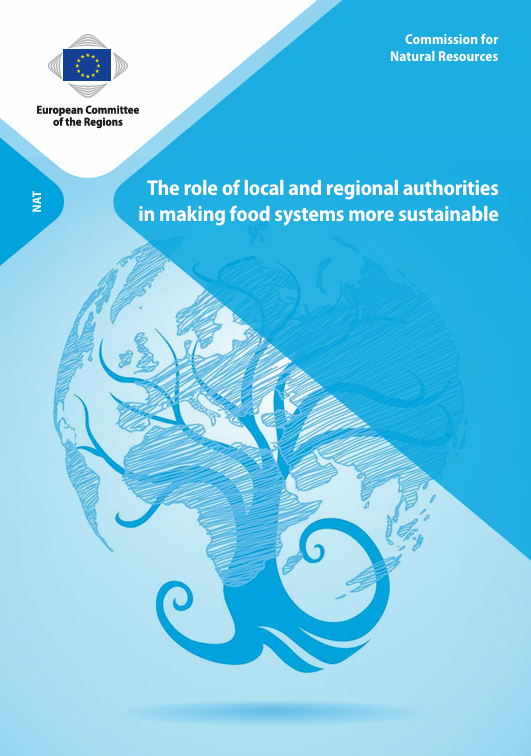
Soldi, R. and Cavallini, S. (2020), The role of local and regional authorities in making food systems more sustainable. Research for the European Committee of the Regions, NAT Commission. This study investigates food policy governance structures and approaches at the local and regional levels which are used to make territorial food systems more sustainable. The aim is twofold: to understand the role of European local and regional authorities (LRAs) in territorial food system governance and to outline LRAs’ contribution to the European Commission’s Farm to Fork strategy (COM(2020) 381 final.

Soldi, R. and Kringos, S. (2020), Implementation of the Cross-border Healthcare Directive in the European regions. Research for the European Committee of the Regions, NAT Commission. In November 2019, the European Committee of the Regions launched a consultation through its Network of Regional Hubs to investigate the implementation of the Directive at the territorial level. The consultation was also an opportunity to enquire about expectations for future developments of cross-border healthcare as well as to collect experiences and suggestions for overcoming existing challenges to cooperation between border regions. This report summarises and analyses the results of the consultation.
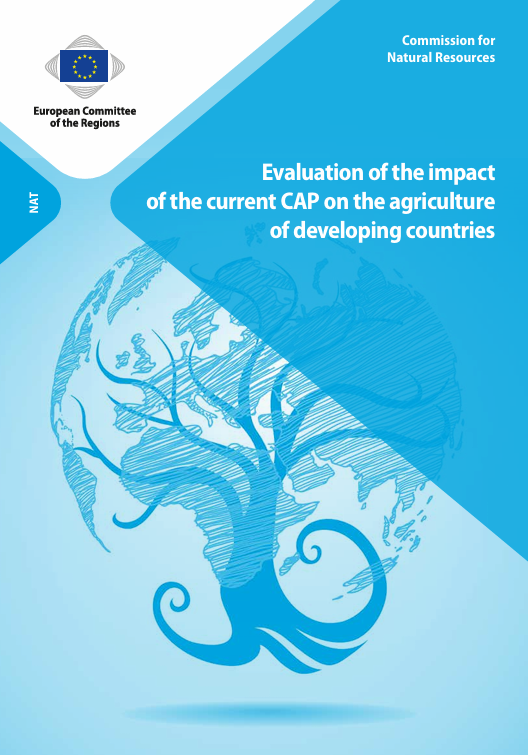
Matthews, A. and Soldi, R. (2019), Evaluation of the impact of the current CAP on the agriculture of developing countries. Research for the European Committee of the Regions, NAT Commission. The terms of reference for this study ask for an evaluation of the impact of current CAP subsidies on the price of EU food produced and exported to developing countries. This research is meant to contribute to the current debate on how the proposed reform of the Common Agricultural Policy (CAP) may minimise its impact on developing countries coherently with EU development cooperation’s objectives. As developing countries are increasingly heterogeneous, the focus of this study is on developing countries facing particular problems of food insecurity. In this study, these ‘vulnerable’ developing countries comprise the Least Developed Countries, the countries of Sub-Saharan Africa, and the African, Caribbean and Pacific countries that are signatories to the Cotonou Agreement with the EU.

Soldi, R. and Cavallini, S. (2018), Consumer protection. Research for the European Committee of the Regions, NAT Commission. In 2018, the EC put forward a number of proposals for modernising and effectively enforcing consumer protection rules as well as for guaranteeing an equal treatment of consumers in the European Single Market. This study looks into the EC proposals and investigates how consumer protection is dealt with at the local and regional level throughout the EU (comparative analysis). Examples of practices in this policy domain are collected to partially fill the knowledge gap on what European LRAs actually do in terms of implementation of consumer protection policy and/or enforcement of consumer protection law, and on which instruments and tools they use.
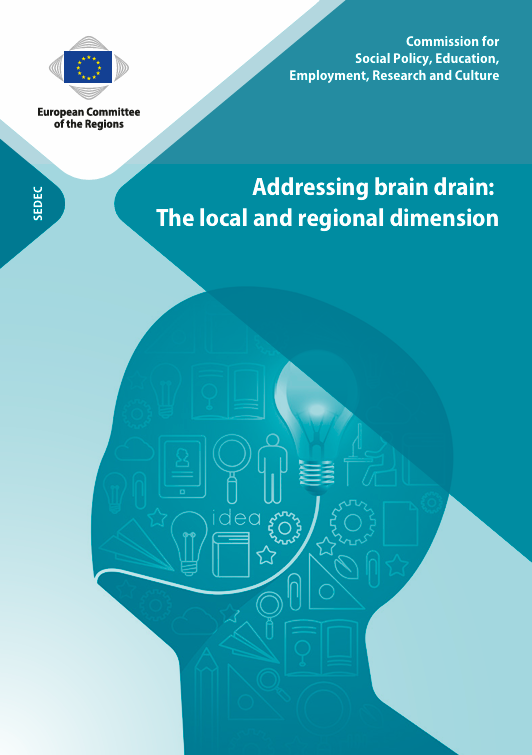
Cavallini, S., Soldi, R., Di Matteo, L., Alina Utma, M. and Errico, B. (2018), Addressing brain drain: The local and regional dimension. Research for the European Committee of the Regions, SEDEC Commission for Social Policy, Education, Employment, Research and Culture. This study investigates how local and regional authorities (LRAs) have developed and implemented local and regional strategies and/or policies with the aim of tackling brain drain and, in particular, the massive out-flow of highly-skilled young people. Since such out-migration is producing negative socio-economic consequences for sending regions and positive effects for receiving regions, the study aims at understanding the extent of the phenomenon in Europe at regional level and how LRAs design and implement effective local measures and/or policies to mitigate/reduce brain drain or to attract talents.

Soldi, R. and Cavallini, S. (2018), Sustainable Forest Management in Regions. Research for the European Committee of the Regions, NAT Commission. This study collects, by means of an online questionnaire, insights of LRAs’ experience in forest management, of their opinion on the impact the EU Forest Strategy has had so far at the territorial level, and of their expectations on the future priorities of the EU forest policy. Overall, the evidence collected through the questionnaire and complemented with cases gathered through desk research shows that LRAs may be very active players who are concerned about sustainable management practices and who may influence the behaviours of other forest owners, including private ones.
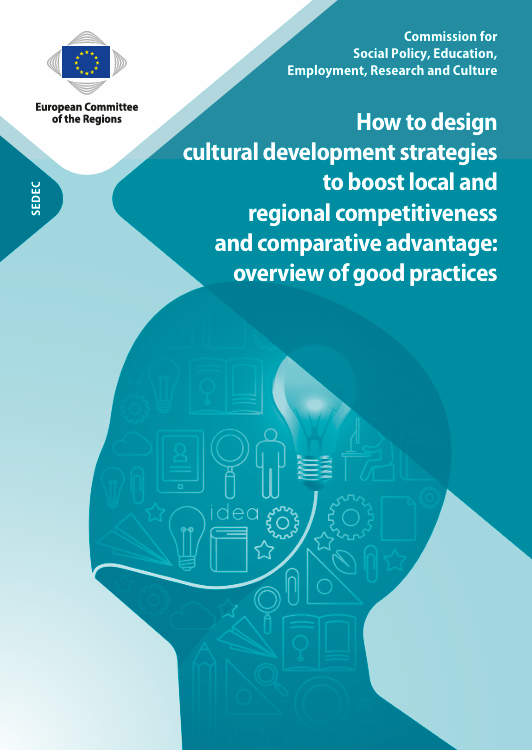
Cavallini, S., Soldi, R., Alina Utma, M. and Errico, B. (2018), How to design cultural development strategies to boost local and regional competitiveness and comparative advantage. Overview of good practices. Research for the European Committee of the Regions, SEDEC Commission for Social Policy, Education, Employment, Research and Culture. This study investigates how cultural development strategies are designed, implemented and exploited by European local and regional authorities (LRAs) to boost the socio-economic growth of their territories. The study builds on the collection of evidence in the form of an inventory of 40 initiatives at the local and regional level, five of which are developed into detailed case studies. A deep analysis of these initiatives allows deriving a set of recommendations to provide inspiration to LRAs for the design of cultural development strategies.
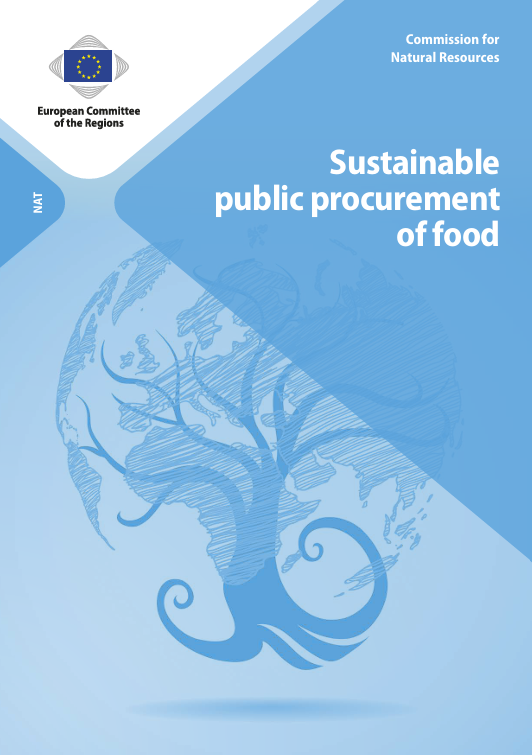
Soldi, R. (2018), Sustainable public procurement of food. Research for the European Committee of the Regions, NAT Commission. Public procurement of food provides the opportunity to drive local and regional food economies towards more sustainable paths. Both Green Public Procurement (GPP) and Sustainable Public Procurement (SPP) are relevant practices in this context. In both cases, other criteria than ‘price only’ or ‘cost only’ are used for the procurement of food supply and/or of catering services. This short study adds to other initiatives aimed at disseminating knowledge on practices that are effective in increasing the use of sustainable food by public institutions. This is done by briefly presenting ten cases. The highlights derived from the cases are used to outline synthetic guidelines for LRAs on the main aspects to be considered for the introduction of sustainable food in public contracts.
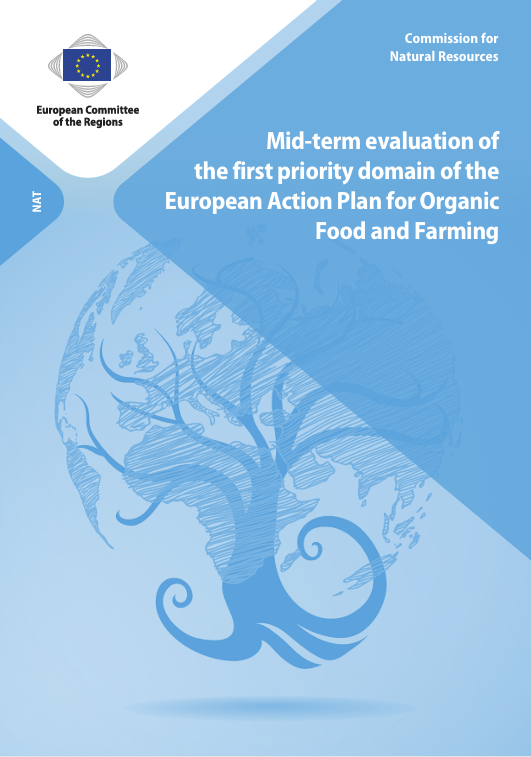
Soldi, R. and Cavallini, S. (2018), Mid-term evaluation of the first priority domain of the European Action Plan for Organic Food and Farming. Research for the European Committee of the Regions, NAT Commission. This study is the mid-term evaluation of the first of the three priority domains addressed by the ‘Action Plan for the future of Organic Production in the European Union’. Such domain aims at increasing the competiveness of European Union organic producers by means of three main strands of EU competency which group a total of nine actions. The evaluation encompasses a combination of approaches, from desk research to the selection and analysis of measurable indicators, and to the consultation with stakeholders by means of an online questionnaire. Overall, the evaluation concludes/highlights that the effectiveness of the actions under the first priority domain is importantly hampered by several aspects.
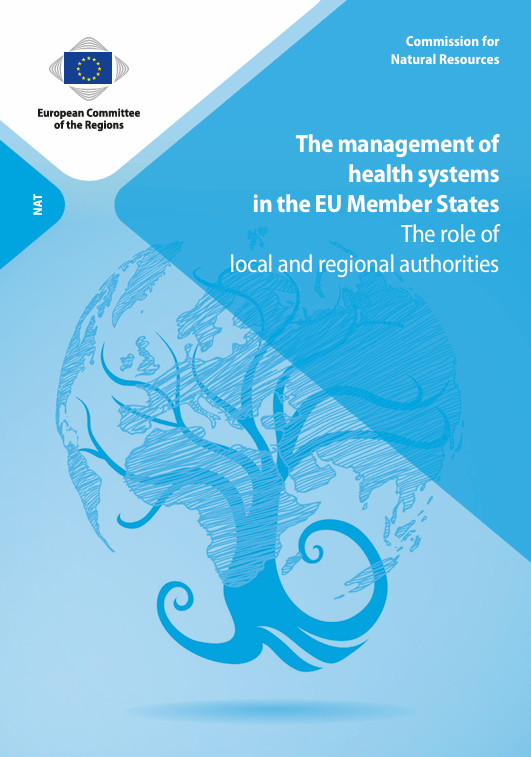
Soldi, R. and Odone, C. (2017), The management of health systems in the EU Member States. The role of local and regional authorities. Update of the 2011 study. Research for the European Committee of the Regions, NAT Commission. This study is a re-make of the work carried out in 2011 for the European Committee of the Regions. Like its precursor, it focuses on the role local and regional authorities have within the health management systems of EU Member States. This role is investigated in terms of power, responsibility and functions with respect to health legislation and policy development as well as healthcare planning, organisation, delivery and funding.
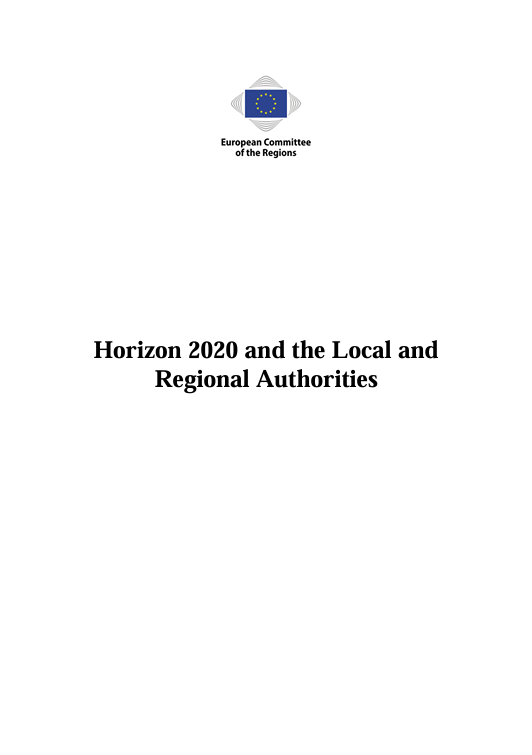
Cavallini, S., Soldi, R., Alina Utma, M. and Benolli, F. (2017), Horizon 2020 and the Local and Regional Authorities. Research for the European Committee of the Regions, SEDEC Commission. This research is the interim evaluation of the Horizon 2020 (H2020) programme undertaken from the perspective of European local and regional authorities (LRAs). It aims at suggesting ways to facilitate LRAs’ accessibility to the programme; enhance the matching of future programmes to innovation and growth needs of LRAs; and improve the role of LRAs in specific areas of intervention such as the seeking of synergies between H2020 and other programmes funded through the European Structural and Investment Funds. The bulk of the research is based on the comprehensive and unique analysis and handling of the quantitative evidence publicly available in the CORDIS database up to January 3, 2017. Furthermore, several interviews with representative stakeholders were carried out to gather additional quantitative and qualitative inputs to the analysis of participation.
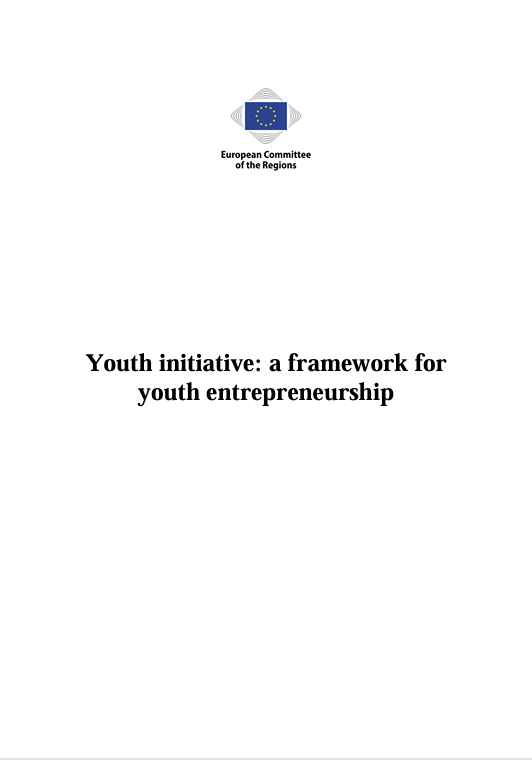
Soldi, R. and Cavallini, S. (2017), Youth initiative: a framework for youth entrepreneurship. Research for the European Committee of the Regions, SEDEC Commission. This study investigates how youth entrepreneurship is promoted and boosted by local and regional authorities (LRAs). In particular, the three main research questions answered by this work include: 1) ‘Which are the background conditions justifying the policy focus on youth entrepreneurship and influencing the participation of young people in the labour market?’; 2) ‘Which are the main measures adopted by LRAs to promote and boost youth entrepreneurship at the territorial level?’; and 3) ‘Which are the main challenges and needs faced by LRAs in the promotion of youth entrepreneurship?’ The study includes an updated analytical overview of the framing conditions and builds on the collection of an inventory of 35 initiatives undertaken by LRAs across the EU, to outline six main categories of measures and analyse them in terms of challenges and needs met by subnational authorities. Finally, a set of recommendations is drawn based on the evidence collected.
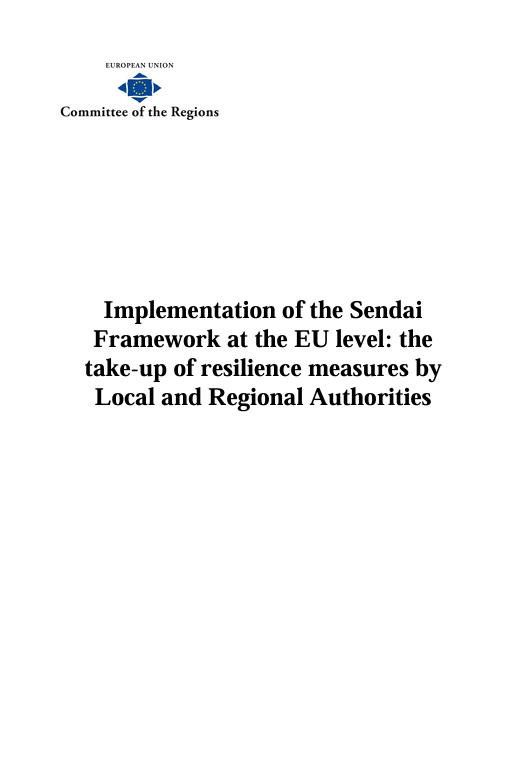
Soldi, R. (2016), Implementation of the Sendai Framework at the EU level: the take-up of resilience measures by Local and Regional Authorities. Research for the European Committee of the Regions, NAT Commission. The Sendai Framework for Disaster Risk Reduction 2015-2030 agreed in March 2015 is the new non-binding agreement guiding worldwide the efforts of stakeholders at all levels: global, regional, national and local. This research outlines the added value of this 15-year global agreement with respect to the EU Civil Protection Mechanism. It also reviews the form taken by local and regional authorities’ commitments towards the implementation of the Sendai Framework. Finally, it provides a comprehensive comparative analysis of the civil protection and disaster risk reduction systems of the 28 EU Member States, with an emphasis on the level of competence of subnational authorities.

Charalambous, A. (2016), Developing Blue economy through better methodology for assessment on local and regional level. Research for the European Committee of the Regions, NAT Commission. Blue economy is an essential driver of development and as such several attempts have been made in order to estimate its size. However, the review of recent initiatives highlights that all point to the high complexity of the exercise. Produced within a framework contract on ‘Agriculture, Health and Maritime Policy’ with the European Committee of the Regions, this study provides an outline of the key elements to be considered by local and regional authorities when defining the scope of an impact assessment methodology for blue economy, and identifies a limited set of indicators deemed most appropriate for use in the impact exercise
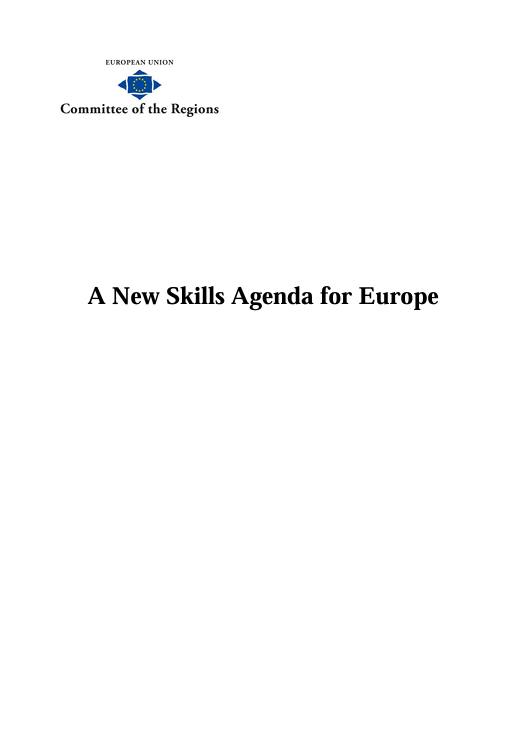
Soldi, R., Cavallini, S., Friedl, J., Volpe, M. and Zuccaro, C.P. (2016), A New Skills Agenda for Europe. Research for the European Committee of the Regions, EDUC Commission. The publishing of ‘A New Skills Agenda for Europe’ on June 2016 acknowledged some major concerns in the policy domains of education and training such as the existence of skills gap and mismatch across the Union and within countries; a shortage of basic, digital, transversal, and entrepreneurial skills; a missing common understanding of key competences on the job; and the still low attractiveness of vocational education and training. First, the study provides an overview across Europe of the state of the art of skills, focussing as much as possible on the regional level. Then, it looks into the measure and progress of skills market misalignment, the future demand of skills, and the hypothetical socio-economic consequences that skills gap and mismatch may have at the territorial level. Furthermore, through the analysis of about 30 initiatives, the challenges faced by local and regional authorities are discussed and framed towards the achievement of three main objectives: filling the skills gap, reducing the skills mismatch, and improving skills intelligence and information sharing. Overall, the research outlines policy options for subnational authorities that may add value to what has been or is already commonly implemented, and that take into account recent policy and socio-economic developments.
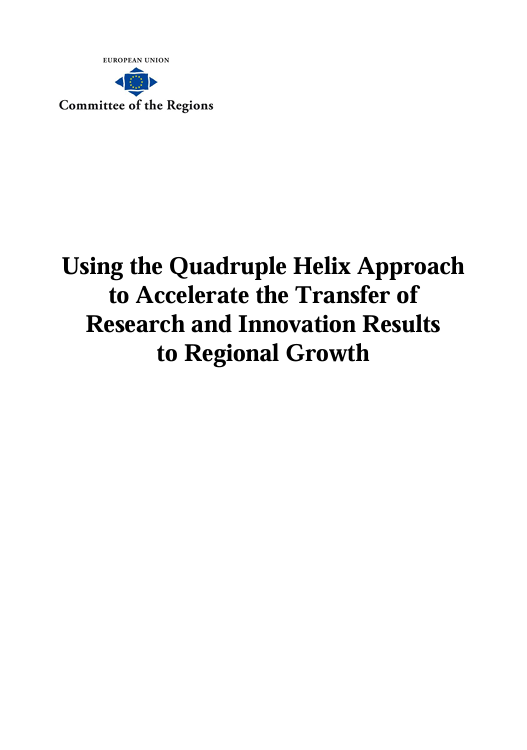
Cavallini, S., Soldi, R., Friedl, J. and Volpe, M. (2016),Using the Quadruple Helix Approach to Accelerate the Transfer of Research and Innovation Results to Regional Growth. Research for the European Committee of the Regions, EDUC Commission. This report investigates the theory and the operationalization of the ‘helices models’ where industry (IND), university (UNI), government (GOV) and civil society (CIV) interact for accelerating the transfer of research and innovation results to regional growth. Based on robust literature review, a working definition of ‘quadruple helix’ (QH) is developed to support the classification of European regions on the basis of their innovation performance. Towards this aim, a ‘QH innovation index’ (QHII) and five sub-indexes are computed, where the sub-indexes reflect the four spheres of the quadruple helix (IND, UNI, GOV, and CIV) and a new element (INT) which informs on the interaction among the actors of the four spheres. The characterisation and comparative analysis of the three outlined types of innovators (advanced, medium and modest) provides insights on the prevailing pullers of innovation in each type, and on the influence on innovation performance of the structural conditions of the regions as well as of the helix model regime in force (i.e. statist, laissez faire, or balanced).
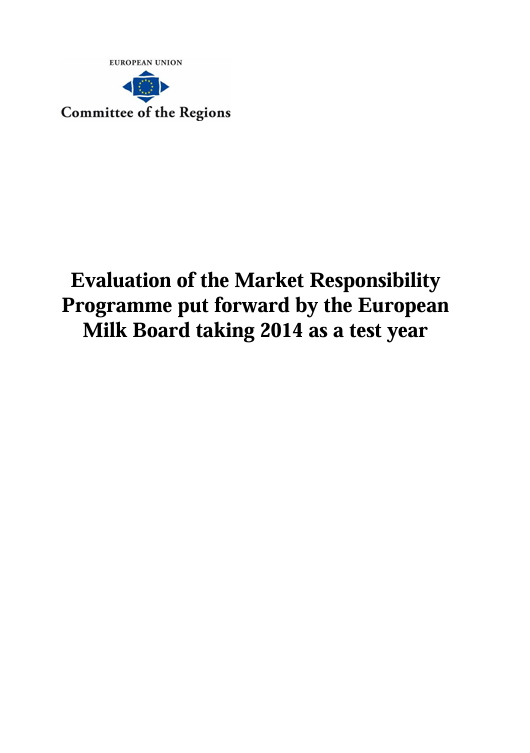
Matthews, A. and Soldi, R. (2016), Evaluation of the Market Responsibility Programme put forward by the European Milk Board, taking 2014 as a test year. Research for the European Committee of the Regions, NAT Commission. This study assesses the Market Responsibility Programme (MRP) put forward by the European Milk Board (EMB), taking 2014 as a test year. The concept of the programme is analysed also against similar schemes debated in the US. The simulation of the operation of the MRP in 2014 is run supposing the programme would have been triggered in that year and making a series of assumptions which are summed up into three main scenarios. The feasibility and efficacy of the MRP is then evaluated in the light of the results of the simulations. The study concludes that further work is needed to clarify the several operational aspects of the MRP which are left undefined in the EMB proposal. Further empirical work to test the likely impacts of the proposal is also desirable given the drawbacks identified through the review of the concept and the simulation of its functioning.
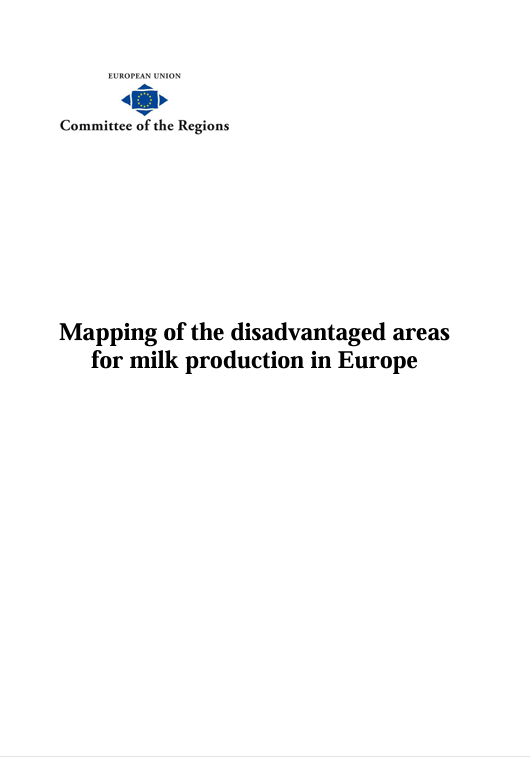
Soldi, R. (2016), Mapping of the disadvantaged areas for milk production in Europe. Research for the European Committee of the Regions, NAT Commission. This study provides the classification and mapping across Europe of disadvantaged areas in relation to milk production. It tries to respond to the need to monitor the territorial impact of the EU dairy policy on disadvantaged milk producing areas, a need which is currently not supported by a common understanding of what makes these areas ‘disadvantaged’ with respect to milk production, and where, precisely, these areas are located. The classification is based on a set of geographical, economic, and structural criteria, all of which have been quantified using objectively verifiable indicators compiled by Eurostat and DG Agriculture.
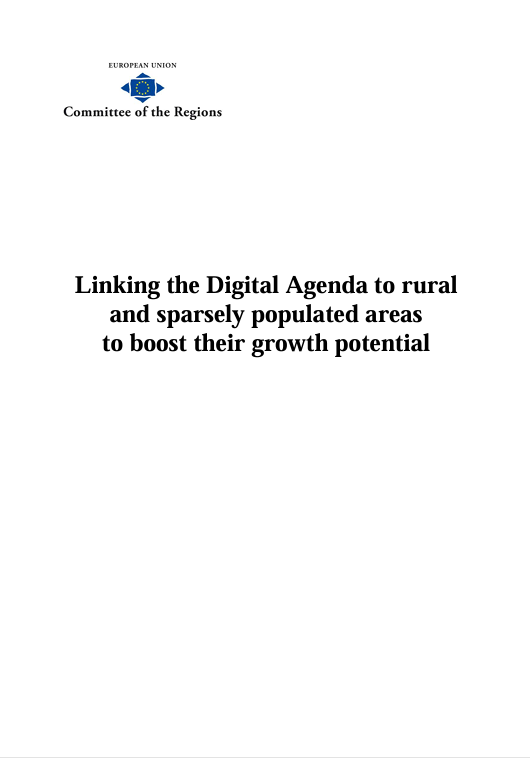
Soldi, R., Cavallini, S., Friedl, J. and Volpe, M. (2016), Linking the Digital Agenda to rural and sparsely populated areas to boost their growth potential. Research for the European Committee of the Regions, EDUC Commission. This study provides an analysis of the state of the art of broadband deployment in areas which are considered unattractive by private investors, either because of structural challenges (e.g. fragmented demand) or economic drawbacks (e.g. high deployment and maintenance cost of the infrastructure). In particular, the focus is on rural, remote and sparsely populated areas of the EU which are defined at NUTS3 level. The research first characterises these areas, then it identifies most common barriers to ICT infrastructure investments as well as the tools and instruments commonly adopted by local and regional authorities for financing the deployment of the infrastructures and/or for attracting external investments. Five case studies are also developed together with suggestions on ways of financing of ICT infrastructures in underserved or unserved areas.
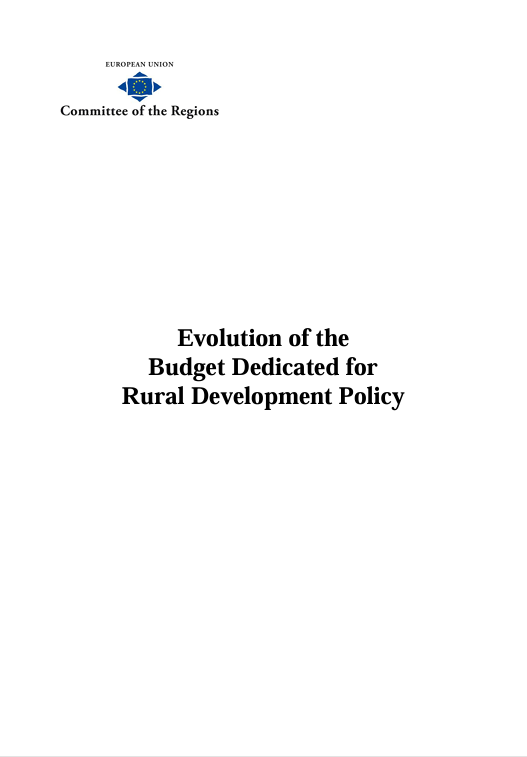
Soldi, R. (2016), Evolution of the Budget Dedicated for Rural Development Policy. Research for the European Committee of the Regions, NAT Commission. This report provides a unique overview of the EU budget dedicated to rural development (RD) in the last 25 years. The analysis focus on allocations through the European Agricultural Guidance and Guarantee Fund (EAGGF) and afterwards through the European Agricultural Fund for Rural Development (EAFRD), but it also reports on funding made available for rural areas through the European Regional Development Fund (ERDF), the European Social Fund (ESF) and the Cohesion Fund (CF). Four multiannual financial frameworks (MFFs) are considered, covering the period from 1993 to 2020. The results show that the current programming period (MFF 2014-2020) has a planned total allocation for RD which is much lower than the RD allocation of the previous MFF. Furthermore, it shows that the reduction is mostly determined by a significantly lower contribution from the ERDF.

Betti, G., Soldi, R., Talev, I. (2015), Fuzzy Multidimensional Indicators of Quality of Life: The Empirical Case of Macedonia. Quality of life must be measured within a multidimensional framework preferably inclusive of objective and subjective indicators that add to the information gathered through economic or monetary-only indices. This paper reports on the first application of the fuzzy set approach to quality of life measurement. It is a follow up of our research project on Quality of Life in the Former Yugoslav Republic of Macedonia funded by Eurofound and completed in 2014. The article has been peer-reviewed and accepted for publication in the Social Indicators Research Journal.
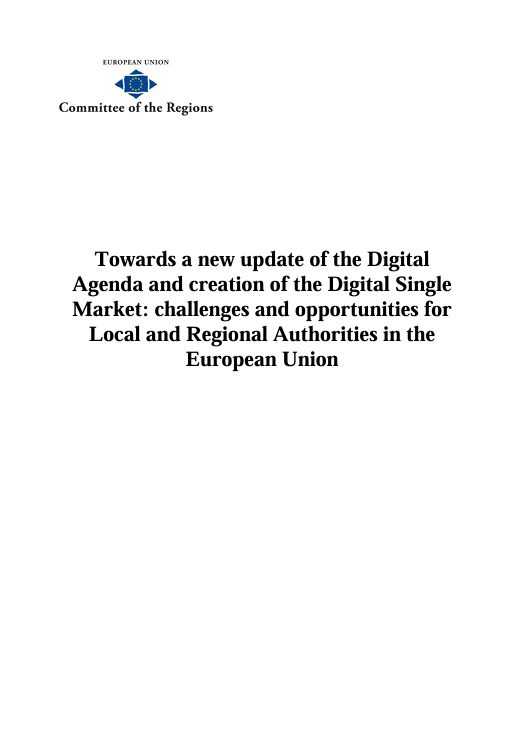
Soldi, R., Cavallini, Volpe, M., S., Friedl, J., Bisogni, F., Costanzo, P. and Rinaldi, M. (2015), Towards a new update of the Digital Agenda and creation of the Digital Single Market: challenges and opportunities for Local and Regional Authorities in the European Union. Research for the European Committee of the Regions, EDUC Commission. This report includes a comprehensive analysis of the main strategies implemented at the local and regional level towards the achievement of the Digital Agenda for Europe and the creation of the Digital Single Market. Fifteen cases from different geographical areas of the EU are highlighted. In addition, we outline policy options for the improvement of ICT infrastructures, ICT take-up, deployment of ICT-enabled services, and ICT sector development.
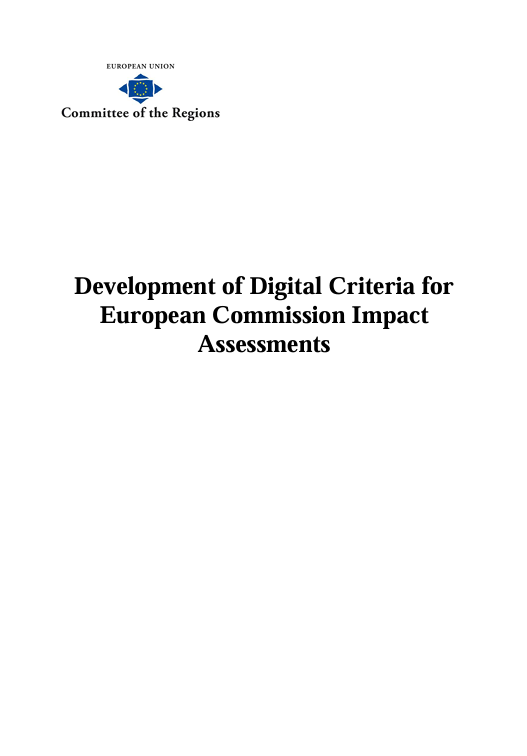
Soldi, R., Cavallini, and Volpe, M. (2015), Development of Digital Criteria for European Commission Impact Assessments. Research for the European Committee of the Regions, EDUC Commission. It identifies relevant digital criteria to be considered in the update of the Impact Assessment Guidelines, with a specific focus on the effects of the Digital Agenda of Europe’s implementation on the local and regional level. Overall, the focus is on improving ways of measuring and monitoring the progress achieved at the territorial level towards the DAE and DSM (Digital Single Market) objectives.
